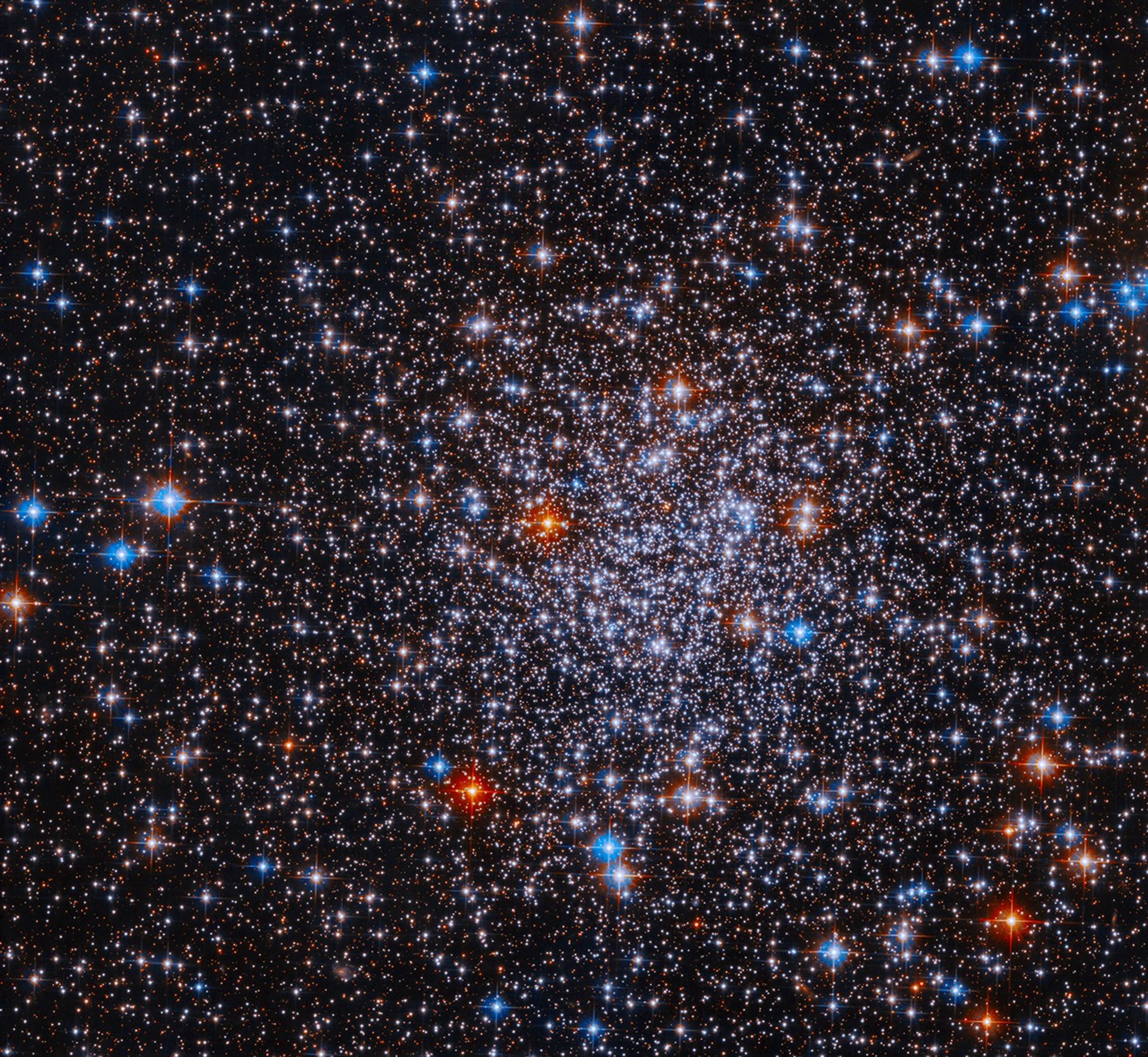Resembling a swirling witch's cauldron of glowing vapors, the black hole-powered core of the Circinus Galaxy lies 13 million light-years away from our own.
This galaxy, designated a type 2 Seyfert, is a class of mostly spiral galaxies that have compact centers and are believed to contain massive black holes. Seyfert galaxies are themselves part of a larger class of objects called Active Galactic Nuclei or AGN. AGN have the ability to remove gas from the centers of their galaxies by blowing it out into space at phenomenal speeds.
In the center of the galaxy and within the inner starburst ring is a V-shaped structure of gas. The structure appears whitish-pink in this composite image, made up of four filters. Two filters capture the narrow lines from atomic transitions in oxygen and hydrogen; two wider filters detect green and near-infrared light. In the narrow-band filters, the V-shaped structure is very pronounced. This region, which is the projection of a three-dimensional cone extending from the nucleus to the galaxy's halo, contains gas that has been heated by radiation emitted by the accreting black hole. A "counter-cone," believed to be present, is obscured from view by dust in the galaxy's disk. Ultraviolet radiation emerging from the central source excites nearby gas causing it to glow. The excited gas is beamed into the oppositely directed cones like two giant searchlights.
Located near the plane of our own Milky Way Galaxy, the Circinus galaxy is partially hidden by intervening dust along our line of sight. As a result, the galaxy went unnoticed until about 25 years ago.
Image Credit: Credits: NASA, Andrew S. Wilson (University of Maryland); Patrick L. Shopbell (Caltech); Chris Simpson (Subaru Telescope); Thaisa Storchi-Bergmann and F. K. B. Barbosa (UFRGS, Brazil); and Martin J. Ward (University of Leicester, U.K.)































